Cozumel Indigenous Species: The Cozumel Thrasher – Mexico’s Most Endangered Bird
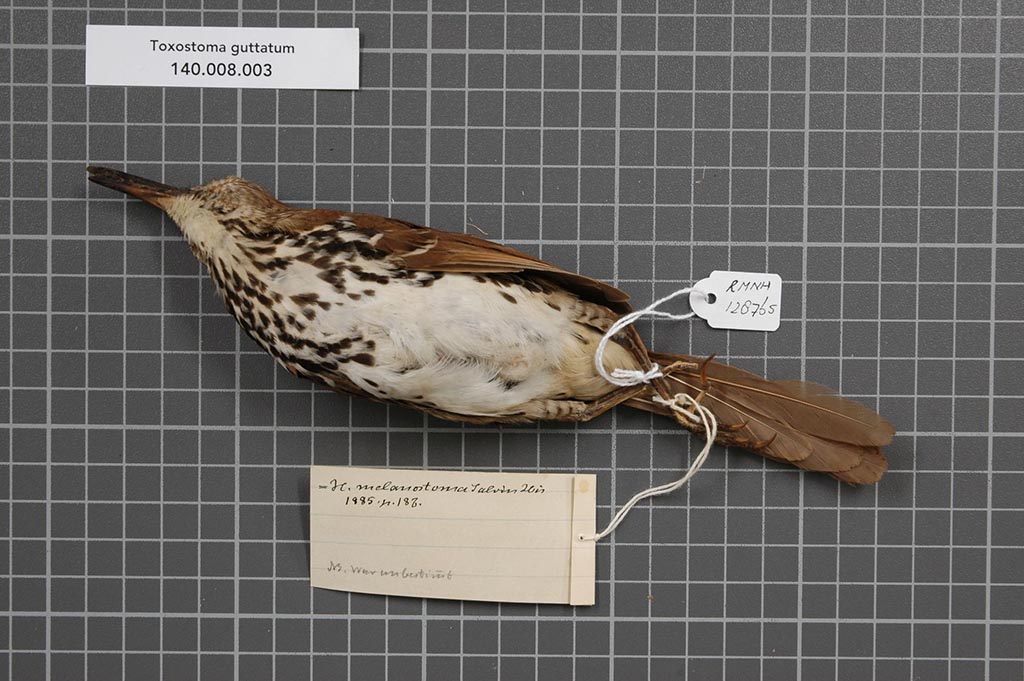
The Cozumel Thrasher, contrary to it’s name is a small, non-descript sand colored bird, from the mockingbird family. What makes the Cozumel Thrasher so interesting is it’s considered to be the most critically endangered species of bird in all of Mexico. In fact, it hasn’t actually been documented since 1995, although there have been unconfirmed sightings as recently as 2008.
Endemic to Cozumel, Toxostoma guttatum, were once quite common, and are closely related to other varieties of Thrashers, such as the long-billed and brown Thrasher. They’re a ground dwelling bird, known to be very shy and will often run away before being seen. It’s been reported that hurricanes severely impacted their numbers, if not decimated the population completely.
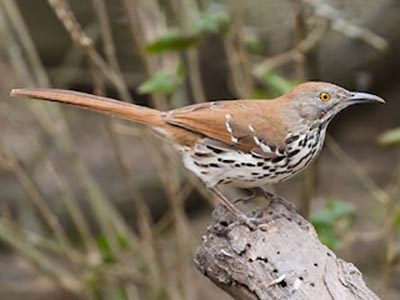
Another unique trait of the Cozumel Thrasher is that they were considered a sub-species of the previously mentioned long-billed Thrasher, but in 1998, they were considered different enough to be their own separate species, which again is unusual since the last documented sighting was 1995, with occasional reports of glimpses as late as 2008.
Cozumel Thrashers are tiny birds, ranging from 21.5 – 24 cm in length. They’re brown with red highlights, warm brown tones, and mottled grey brown details. They have off white bellies, with thin blackish stripes, yellow irises, brown legs and a brown bill. The Juevenile’s plumage has never been recorded, however, it’s assumed it’s quite similar to the long-billed Thrasher.
The Cozumel Thrasher population took a beating when Hurricane Gilbert hit in September 1988, and Hurricane Roxanne also affected their population when it hit in 1995. Coincidently, 1995 is the last time the Thrasher was officially sighted, and it was widely thought to have become extinct that same year.
According to some reports, a Cozumel Thrasher was sighted in 2006 – at the now defunct Cozumel Country Club, however the species was not found during an official 2006 survey.
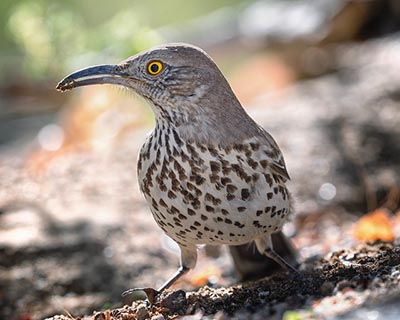
Local guides to the Mayan ruins of San Gervasico report sightings of Cozumel Thrasher in the area, however, again they have never been officially surveyed.
In October and December of 2007 new reports surfaced of small colonies of Cozumel Thrashers, but the birds have not even been unofficially sighted since 2008.
Originally found on the island back in 1885, several ornithologists have theorized that introduced and invasive species, such as the boa constrictor, which was introduced to the island in 1971 played a significant role in the Cozumel Thrasher’s decline.
Especies endémicas de Cozumel: El cuitlacoche de Cozumel, el ave de México en mayor peligro de extinción
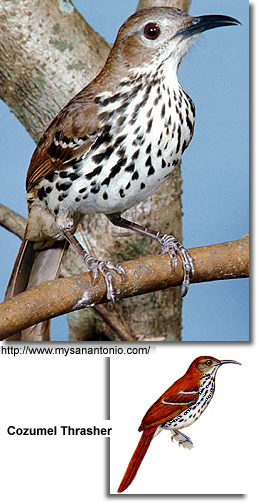
A diferencia de su nombre, el cuitlacoche de Cozumel es un ave pequeña y común color arena perteneciente a la familia de los cenzontles. Lo que hace que el cuitlacoche de Cozumel sea tan interesante es que se le considera como el ave que se encuentra en mayor peligro de extinción en todo México, De hecho, no existen reportes de avistamientos desde 1995 a pesar de haber algunos no confirmados en fechas tan recientes como en 2008.
La Toxostoma guttatum es un ave endémica en Cozumel, que en algún momento fuera bastante común y estrechamente relacionada con otras variedades de cenzontles como el de pico largo y color marrón. Son aves que viven en el suelo. Se les conoce como muy tímidas y a menudo huyen antes de ser vistas. Se ha observado que su volumen ha sido afectado gravemente por los huracanes, si no es que la población ha sido diezmada por completo.
Otro rasgo particular del cuitlacoche de Cozumel es que se le consideró como una sub especie del cenzontle de pico largo; sin embargo, en 1988 se les considero bastante diferentes como para tener su propia especie. Algo que también es inusual ya que el último avistamiento fue en 1995, y algunos reportes ocasionales para 2008.
Los cuitlacoches de Cozumel son pájaros diminutos de entre 21.5 a 24 cm de longitud. Son color marrón con reflejos rojos, cálidos tonos café y motas color café grisáceo como detalles. El vientre es color blanco, con finas rayas negruzcas, iris color amarillo, patas y pico color marrón. El plumaje de estas aves juveniles nunca se ha reportado, pero se supone que es algo similar al del cuitlacoche piquilargo.
En septiembre de 1988 la población del cuitlacoche de Cozumel recibió un tremendo golpe con el paso del huracán Gilberto, y nuevamente en 1995 con el huracán Roxanne. Curiosamente la ultima ocasión que oficialmente se avistó el cuitlacoche fue en 1995, y la idea general es que se extinguió ese mismo año.
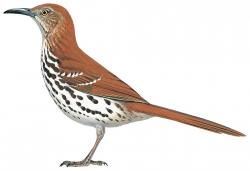
Según algunos reportes, el cuitlacoche de Cozumel fue visto en 2006 en el desaparecido Cozumel Country Club. Sin embargo, no se le observó durante un sondeo oficial en 2006.
Los guías locales de los templos arqueológicos de San Gervasio informan que se han visto cuitlacoches en la zona; sin embargo, nunca se ha realizado un sondeo oficial.
El cuitlacoche fue hallado por primera ocasión en 1885. Diversos ornitólogos sostienen la teoría de que las especies que se han introducido y que son invasoras, tales como la boa constrictor en 1971, jugaron un papel importante en el descenso del cuitlacoche de Cozumel.
______________________________
Una ex yanqui de Connecticut quien llama hogar a Cozumel desde hace más de 15 años. Laura escapó al Caribe hace años, desplazándose de una isla a otra dando clases de BUCEO. Se dedicó a perder el tiempo en Jamaica y finalmente se detuvo en Cozumel para pasar unas vacaciones de 2 semanas que aún no terminan. Convenciendo a sus padres que pagaran una elegante universidad privada, obtuvo su título en Periodismo y Laura crea semanalmente Cozumel 4You, medios sociales y artículos promocionales sobre la Isla y también es moderadora en el grupo Cozumel 4 You en Facebook que actualmente cuenta con 25,000 miembros. Fabián, s umuy tolerante marido, desde hace mucho tiempo se resignó a no tener vida privada, pues se ha visto implicado en los diversos proyectos y planes que urde Laura. Son orgullosos padres de diversos perros y gatos rescatados. Mientras contempla su paso a través de la vida en el Caribe mexicano,Laura continúa siendo la pesadilla en la existencia de su muy tradicional suegra mexicana.
- Mexico New Coins - April 18, 2025
- Feria Cedral 2025 - April 18, 2025
- 2025 Turtle Season - April 18, 2025
An ex-Connecticut Yankee who has called Cozumel home for over 18 years, Laura ran away to the Caribbean years ago, bumped around the islands teaching SCUBA diving, lost some time in Jamaica, and finally stopped in Cozumel for a 2 week vacation that hasn’t ended yet. With a degree in Journalism from a fancy private college she convinced her parents to pay for, Laura writes, edits, and creates the weekly Cozumel 4 You news, social media, and promotional articles about the island, as well as moderates the Cozumel 4 You Facebook group, which currently has over 25,000 members. Her long suffering husband, Fabian, has long since resigned himself to having zero private life, as he’s been involved in her various schemes and plots since his arrival. Proud parents to a variety of rescue dogs and cats, Laura continues to be the bane of her traditional Mexican mother-in-law’s existence, as she muses her way through life in the Mexican Caribbean. ______________________________ Una ex yanqui de Connecticut quien llama hogar a Cozumel desde hace más de 15 años. Laura escapó al Caribe hace años, desplazándose de una isla a otra dando clases de BUCEO. Se dedicó a perder el tiempo en Jamaica y finalmente se detuvo en Cozumel para pasar unas vacaciones de 2 semanas que aún no terminan. Convenciendo a sus padres que pagaran una elegante universidad privada, obtuvo su título en Periodismo y Laura crea semanalmente Cozumel 4You, medios sociales y artículos promocionales sobre la Isla y también es moderadora en el grupo Cozumel 4 You en Facebook que actualmente cuenta con 25,000 miembros. Fabián, s umuy tolerante marido, desde hace mucho tiempo se resignó a no tener vida privada, pues se ha visto implicado en los diversos proyectos y planes que urde Laura. Son orgullosos padres de diversos perros y gatos rescatados. Mientras contempla su paso a través de la vida en el Caribe mexicano, Laura continúa siendo la pesadilla en la existencia de su muy tradicional suegra mexicana.
2025 Turtle Season
2025 Turtle Season 2025 Cozumel Turtle Egg Season Kicks off With the...
“Cozumel Vivo” Marine Conservation
“Cozumel Vivo” Marine Conservation The “Cozumel Vivo” Project Unites Science and Community...
Cozumel Sargassum Seaweed
Cozumel Sargassum Seaweed Spring is Here & so is Sargassum The sargassum...
Reef Care Parrotfish Slaughter Cozumel
Reef Care Parrotfish Slaughter Cozumel “Caring for our reefs is everyone’s responsibility,”...









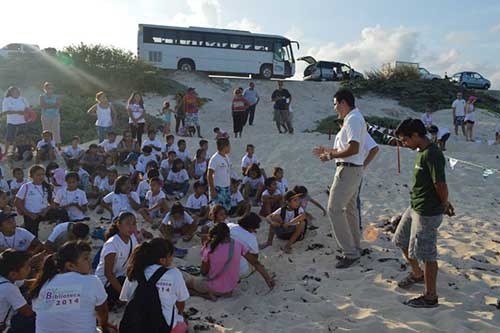

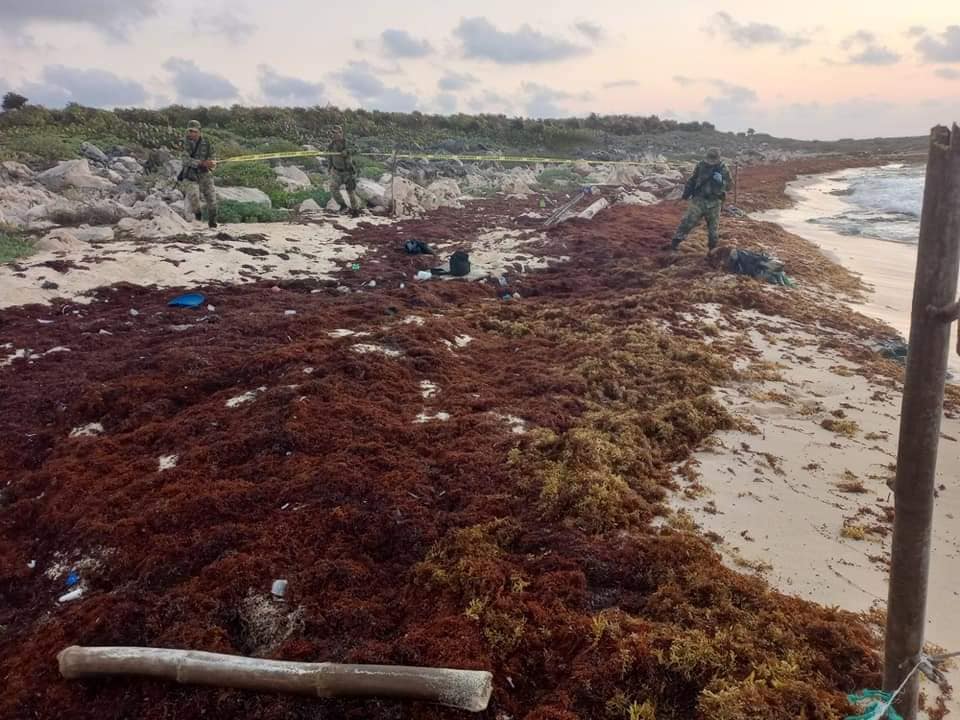
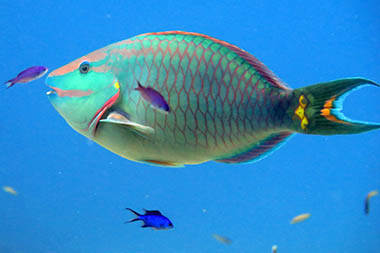







Leave a comment